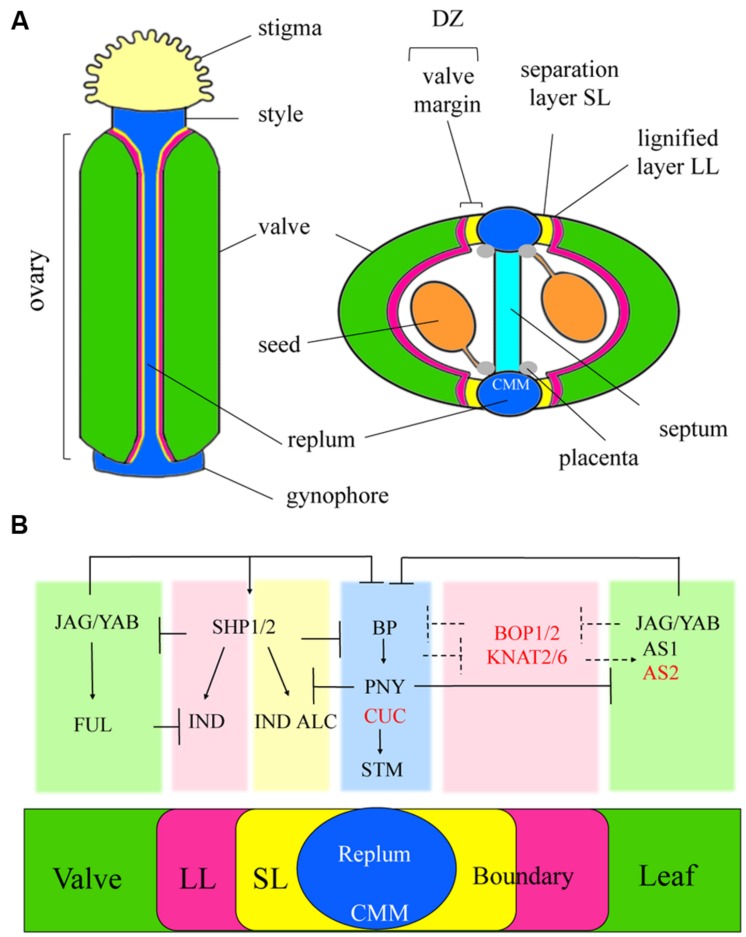FIGURE 4.
Schematic of an Arabidopsis fruit and summary of networks for fruit patterning compared to the SAM-leaf boundary. (A) The Arabidopsis fruit derived from two fused carpel valves that represent modified leaves. Valve margins are a lateral organ boundary specialized for dehiscence that joins the carpels to a meristematic tissue called the replum. The internal surface of the replum or CMM provides septum and placenta that gives rise to ovules that develop into seeds at fertilization. Differentiation of the valve margins requires GA, CK, and depletion of auxin (see text). When the fruit is mature, the valve margin differentiates to form the dehiscence zone (DZ) comprising two layers: a separation layer (SL) where the fruit will open and a lignified layer (LL) continuous with the lining of the fruit that provides tension required in spring-like opening of the fruit for seed dispersal. (B) Similar to their role in leaves, JAG and YAB factors together with AS1–AS2 are required in restricting expression of meristematic genes BP and PNY to the central replum domain and in restricting valve margin identity genes to the boundary junction. FUL is a stage-specific factor that confers valve identity and functions similarly to AS1–AS2 and JAB/YAB to correctly position the replum and valve margin identity domains. Red lettering, SAM-leaf boundary genes: CUC1/2 activate STM required in formation of the CMM and BOP1/2 and KNAT2/6 expressed in the valve margin of fruit are predicted to antagonize BP-PNY activity in the replum. Dashed arrows, hypothetical interactions.

